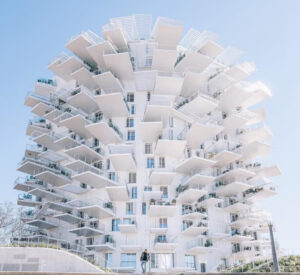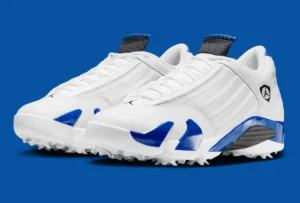The debut of the Isetta-inspired Microlino EV at the 2016 Geneva Motor Show marked a significant moment in the revival of microcars for urban commuting. Drawing from the iconic BMW Isetta, the Microlino combines retro design with modern technology, including a battery-electric powertrain. The production model finally rolled out in 2022, with its official launch taking place at the 2024 Paris Motor Show. This microcar represents a solution to increasing urban congestion and environmental concerns, offering an adorable, efficient, and space-saving vehicle option for city dwellers.
The Microcar Revolution: Why the Microlino Matters
The Microlino addresses a growing need for compact, environmentally friendly vehicles in cities where traffic congestion and pollution are becoming unmanageable. The concept of the microcar isn’t new—its predecessor, the Isetta, was a post-war innovation that offered inexpensive, compact transport. However, the Microlino’s electric powertrain aligns it with today’s demands for cleaner transportation. This tiny EV is powered by lithium-ion batteries, offering a sustainable alternative to conventional gasoline-powered vehicles. Its compact size allows for easier parking and better maneuverability in crowded urban environments, making it highly practical.
Additionally, the Microlino offers a nostalgic aesthetic, appealing to those who appreciate vintage designs. Its unique front-entry door and bubble-shaped frame are unmistakably inspired by the original Isetta, but the addition of modern electric technology elevates it to a new level of innovation. The Microlino isn’t just an exercise in nostalgia—it’s a fully functional vehicle built for today’s cities, where sustainability, efficiency, and style are becoming increasingly important for consumers.
Practicality Meets Charm
One of the biggest advantages of the Microlino is its sheer practicality. Designed primarily for urban environments, the car’s compact size (2.5 meters in length) and light weight (about 513 kg) make it perfect for navigating tight streets and squeezing into small parking spots. According to Micro Mobility Systems AG, the vehicle has a range of up to 230 kilometers, which is more than sufficient for daily city commuting. The electric motor generates 17 horsepower, which may seem modest, but is perfectly adequate for a car designed for short city drives rather than long highway journeys.
The Microlino’s single front door, an homage to the Isetta’s quirky design, may seem unconventional but adds to the vehicle’s charm. It opens from the front, allowing passengers to step out directly onto the sidewalk. This design is not just a gimmick; it reflects thoughtful engineering that maximizes the use of space and ensures convenience for city dwellers. Inside, the Microlino seats two passengers comfortably, with enough room for essentials like groceries or small luggage, making it an ideal option for daily commuting or quick errands around town.
Beyond its practicality, the Microlino exudes an undeniable charm. Its rounded shape and retro styling create a sense of joy and whimsy, distinguishing it from the often austere designs of modern electric vehicles. In an era where cars are increasingly associated with sleek lines and aggressive stances, the Microlino’s friendly, approachable design is a refreshing change. It’s a car that doesn’t take itself too seriously, yet still delivers on performance and sustainability.
Addressing Environmental Concerns
One of the key drivers behind the Microlino’s creation is its potential to address urban environmental concerns. The vehicle’s electric powertrain produces zero emissions, making it a much more eco-friendly alternative to traditional gas-powered cars. This is particularly important in cities that are grappling with rising pollution levels and are implementing increasingly stringent emissions regulations.
Electric vehicles like the Microlino are becoming critical to the future of urban transportation as governments push for greener alternatives. In this context, the Microlino’s relatively small battery (which ranges from 6 to 14 kWh, depending on the model) is actually an advantage, as it reduces the strain on resources while still providing enough energy for everyday commuting. The car’s eco-friendly credentials make it an attractive option for environmentally conscious consumers who still want style and practicality in their vehicle.
The Evolution from Concept to Reality
The journey from concept to production was a long one for the Microlino. It first appeared as a prototype at the 2016 Geneva Motor Show, drawing immediate attention for its combination of retro design and modern electric mobility. However, bringing the vehicle to production was delayed by several factors, including technical challenges and legal disputes over design patents.
By 2022, the Microlino was finally ready for production, launching in various markets and receiving positive feedback for its practicality and unique design. The official launch at the 2024 Paris Motor Show marked a significant milestone in the vehicle’s development, solidifying its place in the market and proving that there is a strong demand for small, eco-friendly urban cars.
The Microlino’s success also reflects broader trends in the automotive industry, where smaller, electric-powered vehicles are gaining popularity as cities become more congested and environmental concerns continue to rise. As the need for sustainable transportation grows, cars like the Microlino offer a glimpse into the future of city commuting—efficient, compact, and fun to drive.
Despite its appeal, the Microlino faces several challenges as it enters a competitive EV market. The rise of microcars is still a niche movement, and while they make perfect sense for city driving, convincing a broader audience to adopt smaller vehicles may take time. Many consumers still associate car ownership with status and size, and while the Microlino is undeniably stylish, it may take a shift in consumer attitudes for microcars to become mainstream.
Moreover, the competition in the electric vehicle market is fierce. Larger, more established automakers are investing heavily in EV technology, with many offering compact models designed specifically for city driving. The Microlino will need to carve out its niche by continuing to emphasize its unique design, environmental benefits, and practicality. It’s a car that appeals to a specific type of driver—someone who values charm, sustainability, and efficiency over size and speed.
Another challenge lies in infrastructure. While electric vehicles are becoming more common, many cities still lack the necessary charging infrastructure to support widespread EV adoption. This is particularly true for microcars, which may require specialized charging solutions due to their smaller battery sizes. As cities invest more in EV infrastructure, the potential for microcars like the Microlino to thrive will increase, but this remains a hurdle in the short term.
The Microlino is more than just a modern take on the iconic Isetta—it’s a symbol of the future of urban transportation. By combining retro charm with cutting-edge electric technology, the Microlino offers a solution to the challenges posed by overcrowded, polluted cities. It’s a car that appeals not just to fans of vintage design, but to anyone looking for an eco-friendly, practical, and fun-to-drive vehicle for city commuting.
The official launch at the 2024 Paris Motor Show cements the Microlino’s place in the market and demonstrates the growing demand for microcars that prioritize sustainability without compromising on style. As cities continue to evolve and adapt to new environmental challenges, vehicles like the Microlino will play a key role in shaping the future of urban mobility. The journey from concept to reality may have taken time, but the Microlino is now ready to make its mark on the roads of the world’s busiest cities.
No comments yet.








